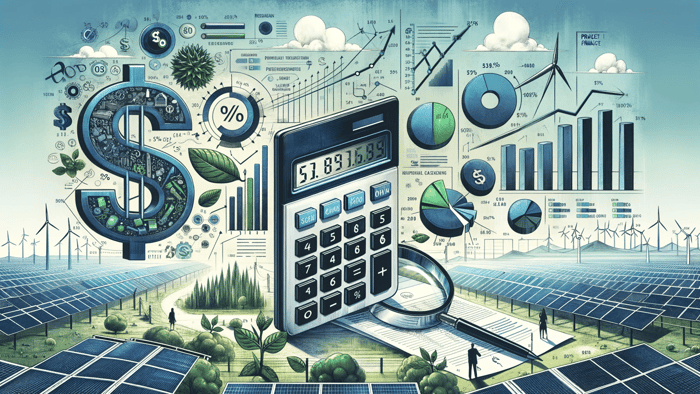The equity payback period is a financial metric used in project finance to measure the amount of time it takes for an investor to recoup their initial equity investment in a project. It represents the number of years required for the cumulative cash inflows from the project to equal the initial equity investment.
In project finance, the equity payback period is calculated by dividing the initial equity investment by the annual cash inflows generated by the project.
Project sponsors and investors often use the equity payback period as a key performance indicator for measuring the project's financial success and assessing the risk of the investment. A shorter payback indicates that the project generates cash flows more quickly and is, therefore, less risky. In comparison, a more extended payback time indicates that the project generates cash flows more slowly and is, therefore, riskier.
However, it is important to note that the equity payback period does not consider the time value of money or other factors that may affect the project's profitability. Therefore, project finance professionals typically use a range of financial metrics, including the equity payback period, the internal rate of return, and the cash-on-cash return, to evaluate a project's financial viability and its risks and potential rewards.
Payback Period vs. Cash-on-Cash Return vs. Internal Rate of Return
In project finance, there are several financial metrics used to evaluate the profitability and viability of a project. The equity payback time, cash-on-cash return, and internal rate of return are three such metrics. Here's how they differ:
1. Equity Payback Period: The equity payback time is the length of time it takes for the project to generate enough cash flow to pay back the initial equity investment. The equity payback period is a measure of the time it takes for the investors to recover their initial investment in the project. A shorter equity payback period is generally preferred because it indicates a faster return on investment.
2. Cash-on-Cash Return: The cash-on-cash return is the ratio of the annual cash flow generated by the project to the initial equity investment. It is a measure of the cash return on the equity investment, and it helps investors evaluate the annual return on their investment. A higher cash-on-cash return is generally preferred because it indicates a higher return on investment.
3. Internal Rate of Return: The internal rate of return (IRR) is the discount rate that makes the net present value (NPV) of the project's cash flows equal to zero. The IRR is a measure of the project's profitability, and it helps investors evaluate the potential return on their investment. A higher IRR is generally preferred because it indicates a higher potential return on investment. Unlike the equity payback period and cash-on-cash return, the IRR takes into account the time value of money and considers all the cash flows generated by the project over its entire life.
In summary, while the equity payback period and cash-on-cash return are measures of the return on the initial equity investment, the IRR is a more comprehensive measure of the project's profitability over its entire life, taking into account the time value of money.






